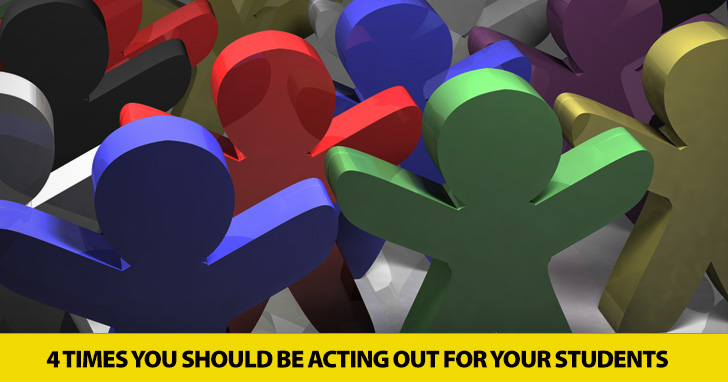You Ought to Be in Pictures: 4 Times You Should Be Acting out for Your Students


Some researchers claim that 60-90% of our communication comes from paralinguistic, that is beyond the words we say, clues. Body language includes posture, gestures, facial expressions and body language, and like so many other things, does not necessarily translate from one culture to another. Though linguistic fluency is probably your number one priority in your ESL class as it should be, you and your students will find it worthwhile taking a moment or two to talk about body language.

Depending on the home cultures of your ESL students, they may have a very different understanding of eye contact than do native speakers of English. In some cultures, it is impolite to make eye contact with a superior. This gesture is seen as threatening, challenging or rude. Americans, however, interpret a lack of eye contact not as a sign on humility and respect, but as a sign of guilt, the inability to trust the speaker, or lack of intelligence. Encourage your students to make eye contact as they are speaking. Help them understand that eye contact when listening shows you are paying attention and care about what the other person has to say. Some students may struggle with making eye contact as they speak, but encourage them to try and praise any small accomplishments they make.
Picture this conversation. An American teacher is speaking one on one with an international student. The teacher takes a step backwards. The student steps forward. The teacher takes another step back. The student takes another step forward. They continue, unknowingly, until they move from one side of the room to the other. This is a very real and common occurrence, and it is also an issue of personal space. Each culture has a distinct and subconscious distance that they prefer to keep between them and the people around them. For Americans, that distance is approximately two feet. Members of other cultures prefer different amounts. When ESL students are accustomed to a smaller amount of personal space than the native English speakers with which they interact, their listeners are likely to become uncomfortable quickly, even if they cannot say what it is that is making them uncomfortable. Making your students aware of what personal space is and how much distance English speakers like to keep between them and their conversations will make your students better received than they might be if they were close speakers. If personal space is an issue with your students, have them practice keeping appropriate personal space by having students mingle and make polite conversations with one another while you walk around the room and check their personal space.
Mirroring is more than just checking your hair and lipstick on your way out of the house. Mirroring is a key way of communicating agreement or understanding during a conversation. Often without knowing it, speakers mirror the body language of the person with whom they are speaking. They lean back; we lean back. They furrow their brow; we furrow our brow. They smile; we smile. Whether intentionally or unintentionally, we mimic the body language that we see. Mirroring body language can put a speaker at ease and show someone that you are on the same page emotionally. For students learning English as a second language, mirroring in conversation is important. Many people will wrongly assume a nonnative speaker cannot understand even the simplest of conversations. Students who learn to mirror their conversation partners, though, may earn themselves more credit in a conversation with a native speaker. This technique is particularly useful during professional conversations, such as job interviews, where the speaker is trying to make a strong first impression.
It can aid communication, set the mood for a conversation or help accomplish discourse goals. Being aware of their own body language as well as that of their listener can make all the difference in an important conversation. Talking about body language across cultures may be unusual, but it will ultimately help your students become better English communicators.
What are some strange body language incidents you have had in your time as an ESL teacher?